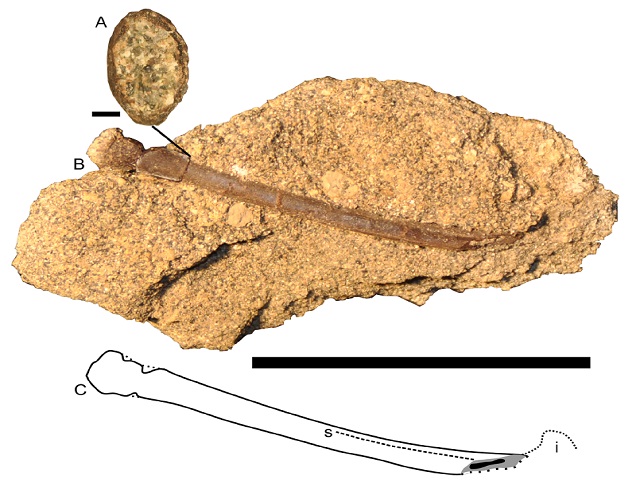A Possible Pterosaur Wing Phalanx from the Kaiparowits Formation (Late Campanian) of Southern Utah, USA
Keywords:
Pterosauria, Kaiparowits Formation, CretaceousAbstract
An isolated bone from the late Campanian-aged Kaiparowits Formation of southern Utah is tentatively identified as the terminal wing phalanx (manual phalanx IV-4) from a pterosaur, representing the first report of this clade from the formation. The specimen is 60 mm long and hollow, with thin and delicate walls and expanded ?proximal and ?distal ends. This is consistent with anatomy reported for equivalent elements in pterodactyloid pterosaurs. Although the specimen cannot be more precisely identified, it is consistent with occurrences of pterosaurs in penecontemporaneous terrestrial depositional environments throughout western North America.





